Meet the cats
From the biggest to the smallest, the fastest to the strongest, find out more about the cats that appear in the series.
Cheetah
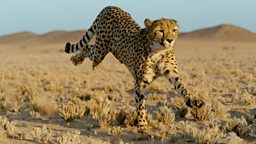
Cheetahs (Acinonyx jubatus) are not just the fastest cats... they’re the fastest animals on land!The latest research is revealing that it’s their extraordinary manoeuvrability that really gives them the killer edge. They can run faster, brake harder and turn quicker than any other predator on land. They have been recorded running at speeds as fast as 96 kmph.
IUCN Status (Jan 2018): Vulnerable
Lion

Lions (Panthera leo) are iconic animals… but they’re strange too. They are the only cat to live in groups. In numbers they find the strength and cooperation to hunt the most formidable prey, including bison, giraffe, and even elephants. Super prides, of as many as 20 lions, live on the savannah of Tanzania, while much smaller isolated prides roam the oldest desert on Earth - the Namib.
IUCN Status (Jan 2018): Vulnerable
Rusty spotted-cat
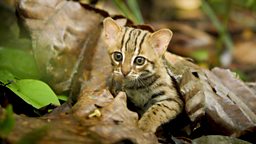
Rusty spotted cats (Prionailurus rubiginosus) live in Sri Lanka. This miniature predator, is the world’s smallest cat… weighing little more than a kilo, 200 times lighter than a lion.
IUCN Status (Jan 2018): Near Threatened
Snow leopard
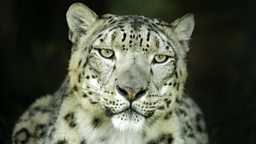
Snow leopards (Panthera uncia) live in the Indian Himalayas, the world’s highest living cat. Known as the ‘ghost of the mountain’ they roam huge territories, where food is scarce, and finding a mate is even harder. They hunt the blue sheep that cling to rocky precipices. The snow leopards long tail helps them to balance when chasing their nimble prey, and when its cold they wrap it around their necks like a scarf.
IUCN Status (Jan 2018): Vulnerable
Leopard
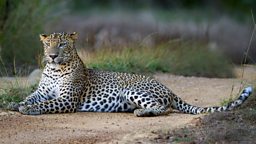
Leopards (Panthera pardus) thrive in more environments than any other wild cat. From the deserts of southern Africa, to the boreal forests of Russia, even the bustling suburbs of Mumbai in India. In Africa their biggest rivals are lions who will often steal food from leopards rather than hunt for themselves.
IUCN Status (Jan 2018): Vulnerable
Puma
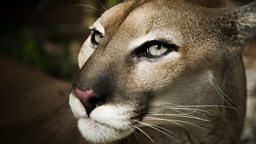
Pumas are the widest ranging mammal in the Americas,thanks to their extraordinary adaptability and an eye for opportunity. On the southern tip of Patagonia, they even stalk the most unlikely of prey… penguins! They hold the Guinness World Record for more names than any other animal including mountain lion, cougar and the night screamer.
IUCN Status (Jan 2018): Least Concern
Canada lynx
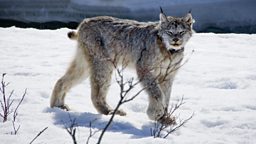
Canada lynx (Lynx canadensis) are the most northerly cats. Thick fur, and huge snowshoe-like feet help them to deal with deep snow and arctic conditions, and enable them to keep up with their equally adept prey - the snowshoe hare.
IUCN Status (Jan 2018): Least Concern
Margay
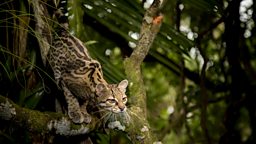
Margay’s (Leopardus wiedii) climb high in the tree tops of central America where they are known as the monkey cat. They leap as far as 4 metres from tree to tree, and rotate their ankles by 180 degrees to walk vertically downwards.
IUCN Status (Jan 2018): Near Threatened
Fishing cat

Fishing cats (Prionailurus viverrinus) are suited to a life in the wetlands of Asia. Beneath a long outer coat they have a short layer of insulating fur that acts like a wetsuit - and they have partially webbed feet. Their long whiskers detect fish moving in the shallows - helping to gauge the exact striking distance.
IUCN Status (Jan 2018): Vulnerable
Clouded Leopard
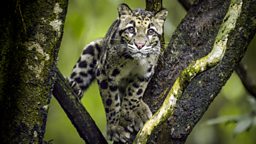
Clouded leopards (Neofelis nebulosa) are one of the most agile climbers in the cat family - with huge feet to grip, and an exceptionally long tail to help with balance. They have the largest canines in proportion to their body size, equalling the length of a tigers. Their stronghold is the forests of northern India.
IUCN Status (Jan 2018): Vulnerable
Caracal

Caracals (Caracal caracal) are found across much of southern and central Africa. They have long powerful legs that enable them to leap as high as 10 feet, and hunt birds on the wing.
IUCN Status (Jan 2018): Least Concern
Jaguar

Jaguar (Panthera onca) are the largest cat in the Americas and have a powerful bite to match. For their size, they are the strongest of any cat, allowing them to dispatch monstrous prey - even caiman crocodiles. On the coast of Costa Rica, they leave the jungle to hunt turtles on a tropical beach.
IUCN Status (Jan 2018): Near Threatened
Bobcat
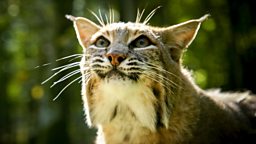
Bobcats (Lynx rufus) are the most widespread cat in the United States, and are named for their stunted tail. They usually hunt small mammals in the forest, but on the coast of California one bobcat has taken to the beach, where she leaps as high as 8 feet to catch gulls.
IUCN Status (Jan 2018): Least Concern
Tiger
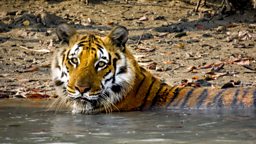
Tigers (Panthera tigris) are the biggest of all the cats - from the giant Siberian tigers that roam the frozen boreal forest of Russia, to the secretive ‘swamp’ tigers of the Indian Sundarbans that bathe in seawater and patrol muddy shores. At the beginning of the 20th century 100,000 reigned across Asia and Europe, but today there are less than 4000 in the wild.
IUCN Status (Jan 2018): Endangered
Ocelot

Ocelots (Leopardus pardalis) are one of the most common cats in central America, but because of their remarkable camouflage, they are rarely seen. The markings on their fur hide them amongst the dappled light of the forest, and they can climb high up into the trees.
IUCN Status (Jan 2018): Least Concern
African wild cat
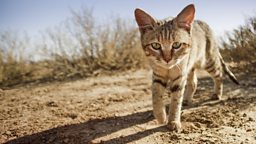
The African wildcat (Felis lybica lybica) is one of the most widespread of all cats, ranging from the middle east to the southern tip of Africa. Their biggest claim to fame is that they are the ancestors of the domestic cat.
IUCN Status (Jan 2018): Least Concern
Sand cat

Sand cats (Felis margarita) are the only cat adapted primarily to desert life. They live in the deserts of North Africa, the Middle East and Central Asia. Long hairs growing between their toes creates a cushion of fur over the foot pads, and this helps to insulate them while moving over hot sand. They are rarely seen and only recently has a scientific study captured the first images of sand cat kittens in the wild.
IUCN Status (Jan 2018): Least Concern
Black-footed cat
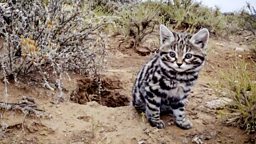
Black-footed cats (Felis nigripes) are Africa’s smallest cat, and the deadliest of the entire cat family - with a 60% hunting success rate. Anything that moves is a potential meal, from locusts to birds and gerbils. They hunt amongst the short desert scrub in the Karoo of South Africa. They make their underground dens in hare burrows, where they raise one or two kittens every year.
IUCN Status (Jan 2018): Vulnerable
Pallas’s cat

Pallas’s cat (Otocolobus manul) thrive in the remote grasslands of the Mongolian steppe. They are perfectly adapted to hide in this open landscape - they have a wide head, low ears, and can flatten their bodies to look like a rock when hunting. They make their dens amongst rocky outcrops, where they raise litters of as many as 6 kittens. Recently images of their facial expressions catapulted them to internet stardom, but in the wild they are rarely seen and have been named the ‘small ghost of the grasslands’.
IUCN Status (Jan 2018): Near Threatened
Serval
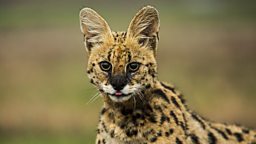
A serval (Leptailurus serval), South Africa. Proportionally, they have the longest ears and legs of any cat, and are adapted to detect and leap for prey amongst tall savanna grass. The world’s densest population of these small cats, have made their home in a secure wasteland that surrounds Africa’s biggest industrial complex.
IUCN Status (Jan 2018): Least Concern
Iberian lynx
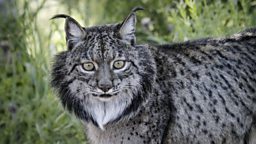
Iberian lynx (Lynx pardinus) once thrived all across the Iberian peninsula but mass extermination of their primary prey - the European rabbit, by myxomatosis, had a devastating effect on this enigmatic cat. By the beginning of the 21st century their population had crashed to less than 100. Now these striking cats are back from the brink of extinction following a ground-breaking captive breeding and release programme.
IUCN Status (Jan 2018): Endangered
